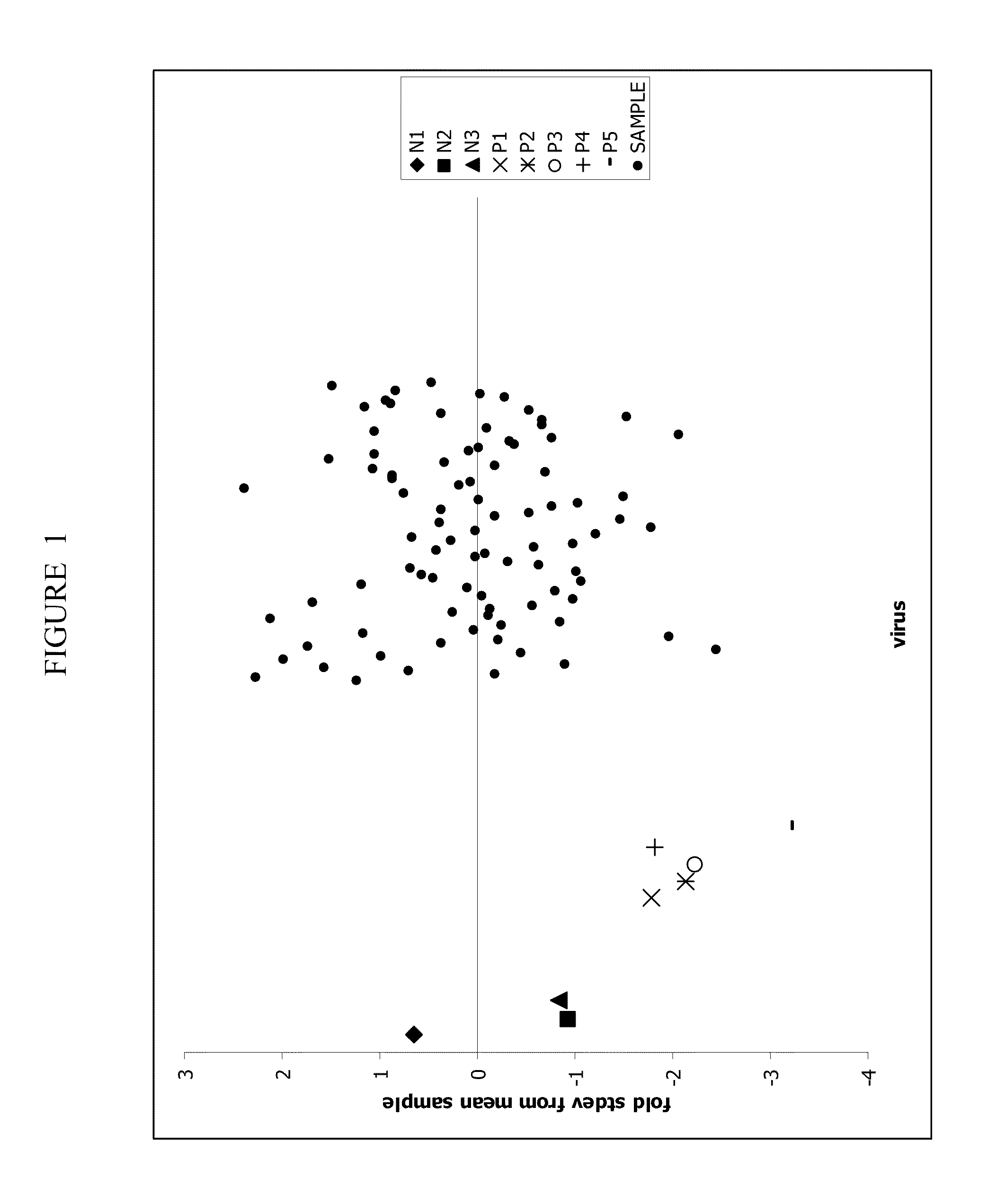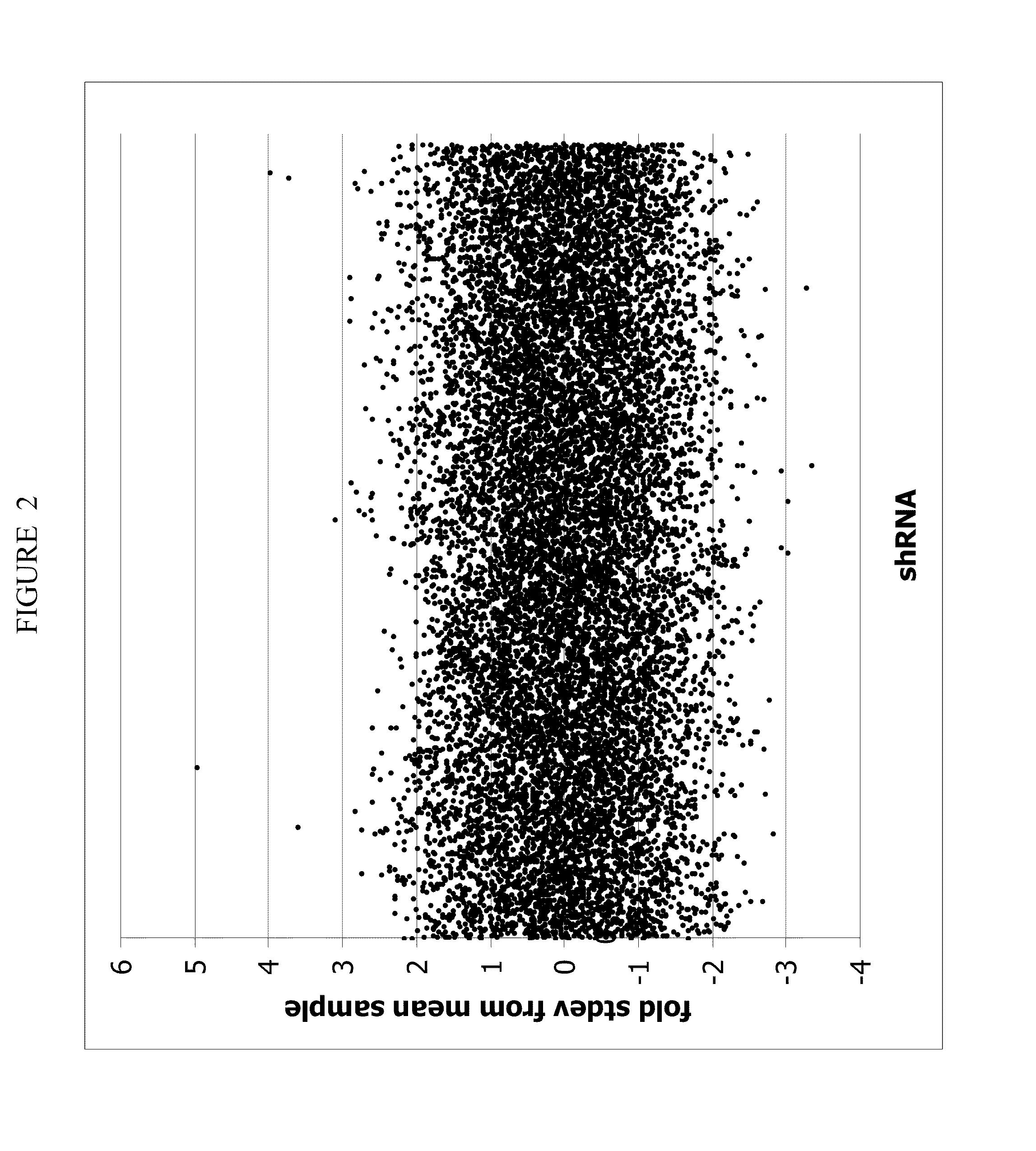Target sequences and methods to identify the same, useful in treatment of neurodegenerative diseases
a technology of target sequences and sequences, applied in the direction of dna/rna fragmentation, biological material analysis, drug compositions, etc., can solve the problems of one or more of these molecular species conferring toxicity, premature death, and increase in mutant huntingtin-induced death
- Summary
- Abstract
- Description
- Claims
- Application Information
AI Technical Summary
Benefits of technology
Problems solved by technology
Method used
Image
Examples
example 1
Design and Setup of a High-Throughput Screening Method for the Identification of Regulators Mutant Huntingtin-Induced Cell Death
[0177]The cell death assay that has been developed for the screening of the SilenceSelect® collections has following distinctive features:[0178]1) The assay is run on SH-SY5Y neuroblastoma cells differentiated towards a neuronal phenotype (Biedler et al., 1973), but could be used for any other source of primary neuronal cells or cell lines.[0179]2) The assay has been optimized for the use with arrayed adenoviral collections for functional genomics purposes.[0180]3) The assay can also be used adapted for use to screen compounds or compound collections.[0181]4) The assay can be run in high throughput mode.[0182]5) The assay can also be adapted to screen other RNA or DNA collections for functional genomics purposes, for example but without limitation dominant negative (DN), cDNA or RNAi collections.
[0183]The protocol of the cell death assay is described below....
example 2
Screening of 11584 “Ad-siRNA's” in the Cell Death Assay
[0190]The cell death assay, the development of which is described in Example 1, has been screened against an arrayed collection of 11584 different recombinant adenoviruses mediating the expression of shRNAs in retinoic acid-differentiated neuroblastoma cells. These shRNAs cause a reduction in expression levels of genes that contain homologous sequences by a mechanism known as RNA interference (RNAi), whereas the expression of the cDNAs cause over-expression of the respective gene. The 11584 Ad-siRNA's contained in the arrayed collection target 5119 different transcripts. On average, every transcript is targeted by 2 to 3 independent Ad-siRNA's.
[0191]Every Ad-siRNA plate contains control viruses that are produced under the same conditions as the SilenceSelect® adenoviral collection. The viruses include three sets of negative control viruses (N1 (Ad5-empty_KD)), N2 (Ad5-Luc_v13_KD), N3 (Ad5-mmSrc_v2_KD)), together with positive co...
example 3
Rescreen of the Primary Hits using Independent Repropagation Material
[0194]To confirm the results of the identified Ad-siRNA in the cell death assay the following approach may be taken: the Ad-siRNA hits are repropagated using PerC6.E2A cells (Crucell, Leiden, The Netherlands) in a 96-well plate format, followed by retesting in the cell death assay protocol as described above. Crude lysate samples of the identified Ad-siRNA hits are selected from the SilenceSelect® collection and rearranged in 96-well plates together with the negative (N1 to N3) and positive controls (P1 to P5). Vials containing crude lysate Ad-siRNA samples are labeled with a barcode (Screenmates™, Matrix technologies) to perform quality checks on the rearranged plates. To propagate the rearranged hit viruses, 40.000 PerC6.E2A cells are seeded in 200 μL of DMEM containing 10% FBS into each well of a 96-well plate and incubated overnight at 39° C. in a humidified incubator at 10% CO2 (PERC6 medium). Subsequently, 2 ...
PUM
| Property | Measurement | Unit |
|---|---|---|
| Molar density | aaaaa | aaaaa |
| Fraction | aaaaa | aaaaa |
| Length | aaaaa | aaaaa |
Abstract
Description
Claims
Application Information
 Login to View More
Login to View More - R&D
- Intellectual Property
- Life Sciences
- Materials
- Tech Scout
- Unparalleled Data Quality
- Higher Quality Content
- 60% Fewer Hallucinations
Browse by: Latest US Patents, China's latest patents, Technical Efficacy Thesaurus, Application Domain, Technology Topic, Popular Technical Reports.
© 2025 PatSnap. All rights reserved.Legal|Privacy policy|Modern Slavery Act Transparency Statement|Sitemap|About US| Contact US: help@patsnap.com


